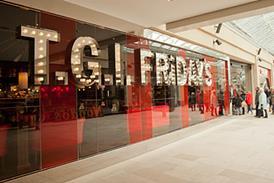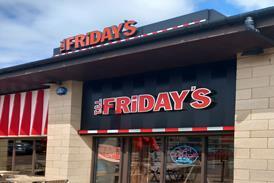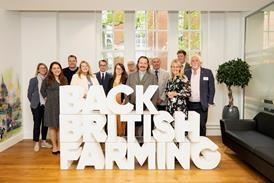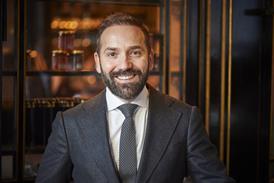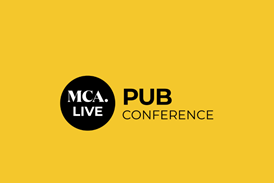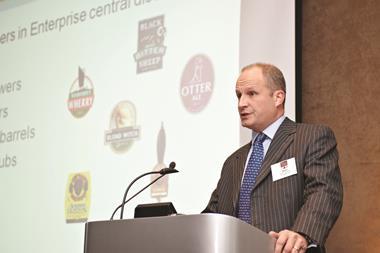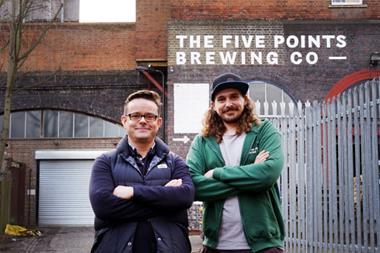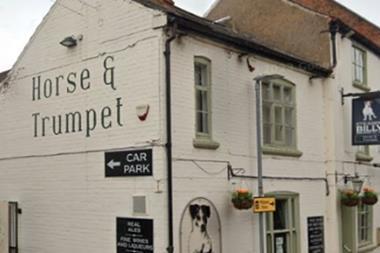Ei Group (EiG) chief executive Simon Townsend talks to MCA following this morning’s full-year results announcement. He discusses:
Plans for the commercial property portfolio, including the potential for a group sale or the creation of a REIT
Plans to focus on growing the scale of its current nine Managed Experts ahead of securing new joint ventures
The imminent introduction of the Craft Union managed model into Greater London – the only part of the UK is not currently represented in
How EiG has no plans to roll out a brand in its managed estate but does intend to further “cut and paste” successful formats
His views on why take up of the Market Rent Only option (MRO) has so far been fairly muted
How the introduction of the group’s first leases since the pubs code shows how it is adapting to a new landscape
Tenanted & leased estate
Townsend said it was a substantial achievement to have grown like-for-like net income in the tenanted and leased estate by 2.3% (up from a 2.1% rise the year before) during a period of profound change, both in the market and within the business.
During the year the pubco made changes to its management structure and the number of divisions across the Publican Partnerships division in response to the evolution of the business structure. The changes saw Nick Light take on the role of lead managing director, with the other former managing director of operations leaving the business.
Most recently, as revealed by MCA earlier this month, the group has introduced its first new agreements since the pubs code.
Townsend said: “The new leases came from assessing the implications of the Pubs Code but also identifying that some publicans want longer agreements that allow them to invest their own money and build a business that they can assign at a later date. It reflects the way we have broadened the range of agreements on offer. The Publican Partnerships division remains the biggest and most important part of our business and will do for a long time to come.
“We developed these leases in collaboration with our Publican Council, which is a group of publicans who meet with us regularly and help us form agreements that meet the sort of things they are looking for.”
He said it was too early to gauge “tangible outcomes” of the new leases, which were only introduced a few weeks ago, but said initial responses from publicans had been “very positive”.
He said the suite of agreements available to tenants and lessees would “continually evolve to reflect the market conditions, the needs of our publicans, what works best for us as a company but also what our competitors are doing”.
Pubs Code
This morning’s announcement stressed that the full impact of the introduction of Market Rent Only (MRO) compliant agreements – a key plank of the Pubs Code - would only be felt after several years.
Between the introduction of the Pubs Code on 21 July 2016 to 30 September 2017, EiG had 790 MRO triggers. This resulted in 209 MRO offers – 102 resulted in mutually agreed tied deals and 10 in mutually agreed free-of-tie deals. A further two pubs have been sold and seven leases repurchased. That leaves 88 yet to be concluded – 60 of which have been referred to the Pubs Code Adjudicator, the bulk of which are expected to lead to new free-of-tie agreements.
Townsend said: “I think we still have some way to go before we can gauge the full impact of the Pubs Code. We have done our best to communicate the availability of the code and the options available under it. The fact that as as many as 209 did ask for an offer under the code, shows there’s plenty of awareness out there.
“As part of the code we had to essentially re-start a lot of rent reviews which meant a lot of people were looking at the options to negotiate the best outcome for them. However, only a few have actually taken up the free-of-tie opportunity.
“I don’t think that’s a reflection on the code at all – I think that’s about people looking at the code and using the knowledge they have now and the information in front of them to get the best deal for them. That’s what the legislation was designed to do – to rebalance the power between tenant and pub company. It seems to be having the desired effect.”
Commercial Properties
During the period EiG grew its commercial property arm to 331 sites – the vast majority of which operate as free-of-tie pubs. However because of the lower than expected take-up of MRO growth is expected to be steady of the current financial year, with a goal of reaching 400 by September 2018.
EiG’s results announcement said it would continue to look at disposals of packages of pubs but also at whether optimal value would be better achieved by growing the scale of the estate towards a bulk disposal or the possibility of establishing a Real Estate Investment Trust (REIT).
Townsend said: “We are open-minded about future disposals because the overall focus must be how can we create greatest value for shareholders. We have taken two opportunities to dispose of small packages to date, at very attractive yields, which demonstrates the value that we are unlocking in that commercial property portfolio. Whether we continue to do that or we go for the larger activity around some sort of REIT is simply down to how we can generate greatest value.
“To go as far as a conversion to REIT does require scale to make it viable and cost effective. We would need to be at around 500 or so properties and have £400-£500m worth of assets (the estate is currently valued at £271m) to be realistically looked at as a potential conversion to a REIT. We are open-minded but continually looking at the best way to drive greatest value.
“While scale is important, the most important point for driving the greatest value is the quality of our assets. Enhancing the quality of that estate, as we have demonstrated this year with a 9.2% uplift in rental income across that estate is by far the most important indicator of improving value.”
Managed estate
On the evolution of Craft Union, Townsend said: “The growing scale of managed operations clearly comes as a result of spreading the geographic footprint of that estate across the country. Craft Union started very much as Northern-based and wet-led proposition. As it has moved south, one thing we have found is that the scale of the amenity and the opportunity to grow larger businesses is probably going to come from having something that is not 100% wet-led. Hence the introduction of a very simple food offer, which is still only being trialled in four pubs. We do think the food offer will be an important contributor to the wet-led success of those businesses. I don’t see these ever becoming food-led businesses but it can be an important assist in driving wet sales.
“Craft Union has still got the majority of its sites up north because that’s where it has started but we now have total coverage of England and Wales open to us. It clearly has to be done in pockets because the operational expansion of the resources to service those businesses needs to be managed carefully.
“Greater London is the only place where Craft Union isn’t yet represented but it will be during the course of this year. We have sites lined up and we have a couple coming in over the next month or so.”
Townsend said it was unlikely that the group would introduce a consumer-facing brand within its managed estate in the near future.
However, he said: “Where we have a style of operation that clearly works we may well copy and paste some of the attributes of that model into another site.
“Bermondsey Pub Company is not only creating trading concepts of its own that can be replicated but is also proving to be very adept at stepping into an existing retail proposition with an existing team of people and simply taking it over.”
He said there was currently no appetite to develop a further strand to the managed business to complement Craft Union. Bermondsey Pub Co and the Managed Investments but added: “We will need to stay very open to the fact there may be a moderation of the business model”.
Managed Investments
Alongside the preliminary results announcement yesterday, EiG unveiled its latest Managed Investments joint venture – Hush Heath Inns. Its ninth partnership is with Richard Balfour-Lynn’s Hush Heath Estate; the first site of which will be The Ship Inn, in Rye, East Sussex.
MCA revealed last month that Ed Gardner, previously managing director of Corney & Barrow had joined Hush Heath as commercial director.
He said: “Ei Managed Investments, together with our leading premium English wine and cider estate is launching a broader ‘Pubs with Rooms’ business, which is a first in UK hospitality.”
Townsend said there was still a “significant pipeline of people who would like to develop a managed investment partnership with us”. However, he added: “Our first priority over the next year is to grow the scale of our existing partners. It’s possible we may add more partners over that time but growing the scale of what we have already is foremost in our minds.”
Beacon
He said the now 200-strong Beacon estate remained a core part of the business and is expected to grow from its current size of 200 sites to c250 by the end of the current financial year.
He said: “It’s very complementary to our Publican Partnership business and to Craft Union and so has a very important part in our overall strategy.”
Analyst view
Mark Brumby, of Langton Capital, said:
“EIG has reassured that it is executing on its May 2015 strategy update.
This committed the group to develop and grow its managed operations & that it would move a number of units across to a commercially-leased division for those lessees that wished to go free of tie.
EIG now feels sufficiently confident to accelerate its transformation.
Debt is manageable, cash flow is solid and, though the economy as a whole may face some headwinds, the group’s predominantly wet-led offer is perhaps more resilient in a downturn than might be eating out.
EIG’s shares are cheap and, should the group be ‘normalised’ and be viewed this way by investors, there is potential upside from current levels.”


